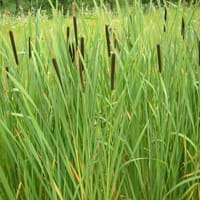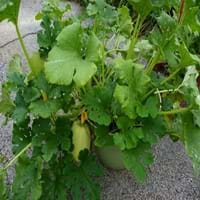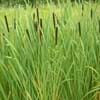Life Span
Perennial
Annual and Perennial
Origin
World/Pandemic, North America, Caribbean, Europe, Northern Africa, Asia
North America, Mexico, Central America
Types
Not Available
Not available
Habitat
Boggy areas, Near ponds
Scrubs, Shores of rivers or lakes
USDA Hardiness Zone
2-12
9-11
Sunset Zone
21,22
A1, A2, A3, H1, H2, 1a, 1b, 2a, 2b, 3a, 3b, 4, 5, 6, 7, 8, 9, 10, 11, 12, 13, 14, 15, 16, 17, 18, 19, 20, 21, 22, 23, 24
Habit
Clump-Forming
Vining/Climbing
Flower Color
Sienna, Chocolate
Yellow, Orange, Dark Green
Flower Color Modifier
Not Available
Bicolor
Fruit Color
Not Available
White, Yellow, Green, Orange, Dark Green
Leaf Color in Spring
Green
Green, Dark Green
Leaf Color in Summer
Green
Green, Dark Green
Leaf Color in Fall
Not Available
Green, Dark Green
Leaf Color in Winter
Green
Not Available
Leaf Shape
Grass like
Heart-shaped
Plant Season
Summer, Fall
Summer, Fall
Sunlight
Full Sun, Partial Sun
Full Sun
Growth Rate
Fast
Very Fast
Type of Soil
Loam, Sand
Loam, Sand
The pH of Soil
Acidic, Neutral, Alkaline
Neutral
Soil Drainage
Poorly Drained
Well drained
Bloom Time
Summer
Indeterminate
Tolerances
Wet Site
Drought
Where to Plant?
Container, Ground
Ground
How to Plant?
Divison, Seedlings
Seedlings
Plant Maintenance
Medium
Medium
Watering Requirements
Does not require regular watering, Water Deeply
Keep ground moist, Keep the Soil well drained, Requires regular watering
In Summer
Lots of watering
Lots of watering
In Spring
Moderate
Moderate
In Winter
Average Water
Average Water
Soil pH
Acidic, Neutral, Alkaline
Neutral
Soil Type
Loam, Sand
Loam, Sand
Soil Drainage Capacity
Poorly Drained
Well drained
Sun Exposure
Full Sun, Partial Sun
Full Sun
Pruning
Cut limbs, Remove damaged leaves, Remove dead branches, Remove dead leaves, Remove dead or diseased plant parts
Prune in the growing season, Prune to stimulate growth, Remove damaged leaves, Remove dead branches, Remove dead leaves
Fertilizers
All-Purpose Liquid Fertilizer, Apply 5-10-5 amounts, Apply N-P-K
All-Purpose Liquid Fertilizer
Pests and Diseases
Red blotch
Not Applicable
Plant Tolerance
Wet Site
Drought
Flower Petal Number
Not Available
Single
Edible Fruit
Not Available
Yes
Foliage Texture
Coarse
Coarse
Foliage Sheen
Matte
Matte
Attracts
Birds
Butterflies, Caterpillar, Flying insects, Insects, Small mammals
Allergy
Skin rash
Not Available
Aesthetic Uses
Ground Cover, Showy Purposes
Showy Purposes
Beauty Benefits
Not Available
Not Available
Environmental Uses
Air purification, soil stabilisation
Air purification
Medicinal Uses
anticoagulant, Astringent, Burns, Diuretic, Emmenagogue, Galactogogue, Haemostatic, Miscellany, Refrigerant, Sedative, Tonic, Vulnerary
Nutrients, Rheumatism, Swelling
Part of Plant Used
Flowers, Leaves, Root, Seeds, Stem
Fruits
Other Uses
Fibre, For making oil, used for weaving hats, Used in biomass, Used in paper industry, Weaving into Mats and Bags
Sauces, Used as favourite late summer fruits, Used As Food
Used As Indoor Plant
No
No
Used As Outdoor Plant
Yes
Yes
Garden Design
Dried Flower/Everlasting, Water Gardens, Wildflower
Edible, Herb / Vegetable, Vine
Botanical Name
TYPHA latifolia
CUCURBITA pepo 'Tivoli'
Common Name
Broadleaf Cattail, Common Cattail
Spaghetti Squash
In Hindi
Broadleaf Cattail
स्पेगेटी स्क्वैश
In German
Laub- Cattail
Spaghettikürbis
In French
broadleaf Cattail
Courge spaghetti
In Spanish
Espadaña de hoja ancha
स्पेगेटी स्क्वैश
In Greek
πλατύφυλλων Cattail
σπαγγέτι Σκουός
In Portuguese
broadleaf Tifa
Spaghetti Squash
In Polish
Broadleaf Cattail
Dynia makaronowa
In Latin
broadleaf Cattail
T INLIDO
Phylum
Magnoliophyta
Tracheophyta
Class
Liliopsida
Magnoliopsida
Order
Typhales
Cucurbitales
Family
Typhaceae
Cucurbitaceae
Clade
Angiosperms, Commelinids, Monocots
Angiosperms, Eudicots, Rosids
Tribe
Not Available
Cucurbiteae
Subfamily
Pitcairnioideae
Cucurbitoideae, Not Available
Number of Species
Not Available
Season and Care of Broadleaf Cattail and Spaghetti Squash
Season and care of Broadleaf Cattail and Spaghetti Squash is important to know. While considering everything about Broadleaf Cattail and Spaghetti Squash Care, growing season is an essential factor. Broadleaf Cattail season is Summer and Fall and Spaghetti Squash season is Summer and Fall. The type of soil for Broadleaf Cattail is Loam, Sand and for Spaghetti Squash is Loam, Sand while the PH of soil for Broadleaf Cattail is Acidic, Neutral, Alkaline and for Spaghetti Squash is Neutral.
Broadleaf Cattail and Spaghetti Squash Physical Information
Broadleaf Cattail and Spaghetti Squash physical information is very important for comparison. Broadleaf Cattail height is 182.88 cm and width 91.44 cm whereas Spaghetti Squash height is 60.00 cm and width 90.00 cm. The color specification of Broadleaf Cattail and Spaghetti Squash are as follows:
Broadleaf Cattail flower color: Sienna and Chocolate
Broadleaf Cattail leaf color: Green
Spaghetti Squash flower color: Yellow, Orange and Dark Green
- Spaghetti Squash leaf color: Green, Dark Green
Care of Broadleaf Cattail and Spaghetti Squash
Care of Broadleaf Cattail and Spaghetti Squash include pruning, fertilizers, watering etc. Broadleaf Cattail pruning is done Cut limbs, Remove damaged leaves, Remove dead branches, Remove dead leaves and Remove dead or diseased plant parts and Spaghetti Squash pruning is done Prune in the growing season, Prune to stimulate growth, Remove damaged leaves, Remove dead branches and Remove dead leaves. In summer Broadleaf Cattail needs Lots of watering and in winter, it needs Average Water. Whereas, in summer Spaghetti Squash needs Lots of watering and in winter, it needs Average Water.





